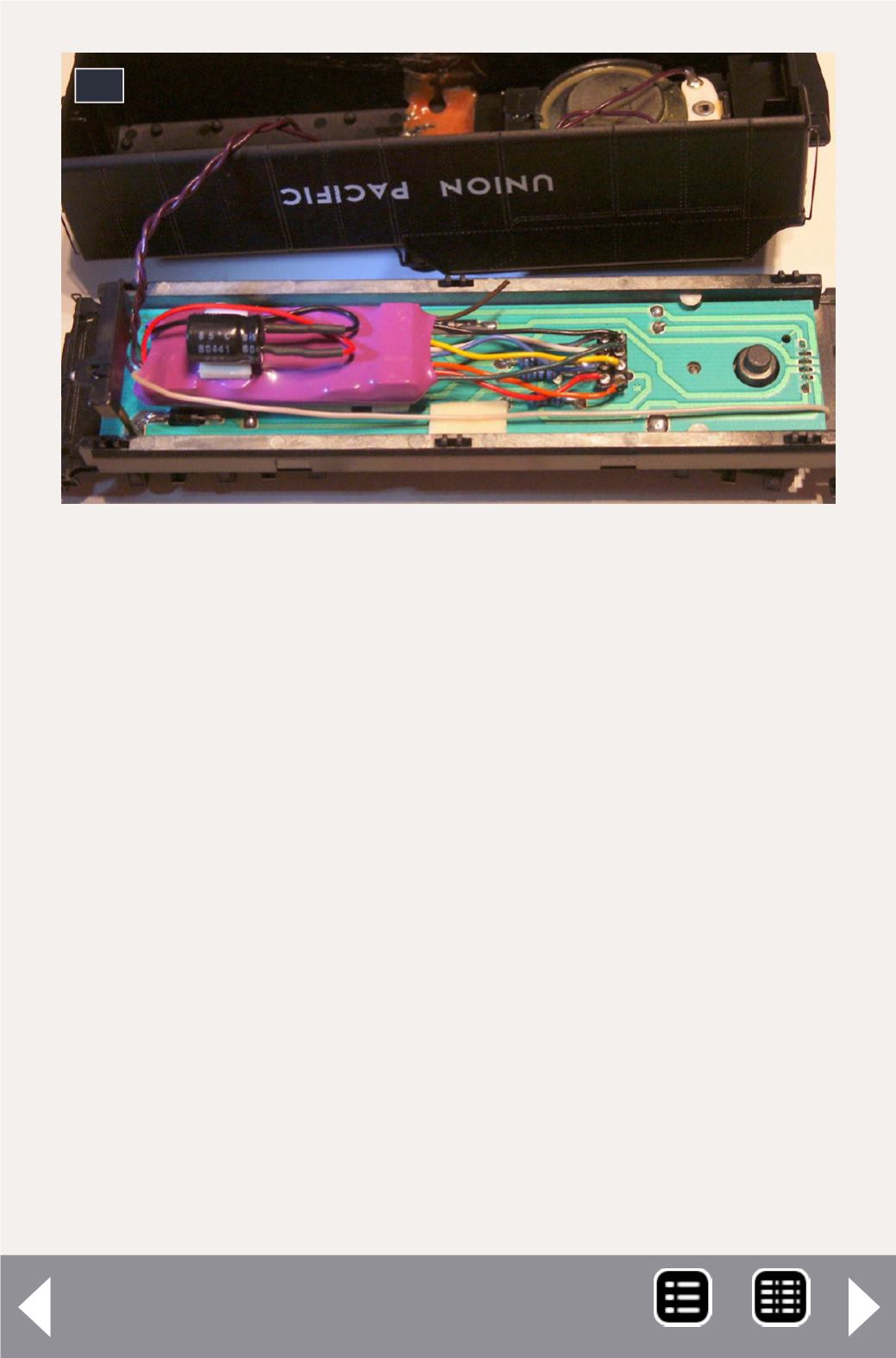
In a full-featured sound decoder, the microprocessor is very
busy. In addition to decoding the DCC data being sent to it, it
may be generating 5 or 6 sounds, calculating what pulses to
send to the motor and as many as 4 different function leads -
all at the same time. Talk about multitasking.
Once the sound waveform is created by the microprocessor, the
amplifier section of the decoder drives the attached speaker.
Keeping the decoders small limits the flexibility of amplifier
design. They are typically designed to work with a specific
speaker load (frequently 8 ohms). Higher impedance (say,
16 ohms) will work, but the volume may be diminished a bit.
Lower impedance (4 ohms) may damage the amplifier.
How fast am I going?
One of the more difficult things to do right is to generate the
proper sounds for the speed your loco is actually moving.
11
11: Tsunami decoder plugged into a Proto Heritage 2-8-
8-2 tender wired to the speaker in the shell.


